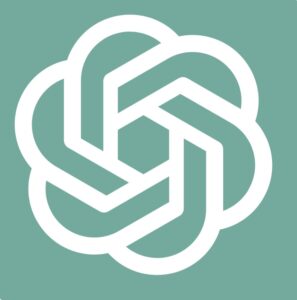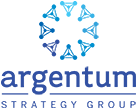 Since the fateful day in early December when I first learned about ChatGPT (CGPT) from a cutting-edge colleague, the topic has exploded. It feels like every day, everywhere we turn, there’s a new article or interview or discussion about the technology. There’s even a new South Park episode about it!
Since the fateful day in early December when I first learned about ChatGPT (CGPT) from a cutting-edge colleague, the topic has exploded. It feels like every day, everywhere we turn, there’s a new article or interview or discussion about the technology. There’s even a new South Park episode about it!
When my colleague initially confessed to me that she was using CGPT to create first drafts for her marketing content, I must admit that it sounded like a guilty secret. I omitted her name from my original LinkedIn post on the topic because I didn’t want to “expose” her.
Obviously that sentiment was short-lived as content drafting is one of the primary ways many of my marketing colleagues are leveraging the tool.
WHAT IT IS – Perspectives from Ethan Mollick, associate professor of Management at Wharton
If you’ve got twenty-seven minutes to spare, take a listen to this Harvard Business Review (HBR) Podcast: Why You (and Your Company) Need to Experiment with CHATGPT Now. It’s got some great practical examples of how to use CGPT in your everyday life and there’s an overview of some preliminary studies that suggest that CGPT contributes to significant productivity gains.
The December 2022 issue of HBR magazine also featured a related article by Mollick: ChatGPT is a Tipping Point for AI. Our vote for most memorable insight in this article goes to:
“[CGPT] is a consummate bullshitter, and I mean that in a technical sense. Bullshit is convincing-sounding nonsense, devoid of truth, and AI is very good at creating it. You can ask [CGPT] to describe how we know dinosaurs had a civilization, and it will happily make up a whole set of facts explaining, quite convincingly, exactly that.”
Mollick has been making the rounds. I first heard him during his NPR interview: Has AI reached the point where a software program can do better work than you? During that segment he provided the best description of CGPT I’ve encountered: “[CGPT is] an omniscient, eager-to-please intern who sometimes lies to you.”
No need to read the full article as we’ve had CGPT summarize it for you:
- In an interview with Ethan Mollick, a professor at the Wharton School of Business at the University of Pennsylvania, Rob Schmitz, host of NPR’s “Marketplace,” discusses the capabilities of ChatGPT, an AI-powered tool that can generate human-like text and answer questions.
- While many teenagers use ChatGPT to cheat on essays, Mollick explores other non-cheating uses for the tool, such as correcting essays, summarizing academic papers, and correcting errors in software code.
- Mollick also describes how he asked ChatGPT to create an MBA syllabus and received a pretty good syllabus for an MBA class, a final assignment, and a grading rubric.
- However, there are ethical implications that arise from the use of AI-generated content, such as whether it is ethical to have AI write a draft that you modify, or whether it is ethical to paste in text and ask AI to improve it.
- Mollick also discusses the possibility of AI replacing human jobs in the future, though he believes it can also multiply human capabilities and intelligence.
Here are some great ways to get started using CGPT:
- Brainstorming
- Getting unstuck when writing
- Summarizing
- Performing/creating transactions
- Analyzing large quantities of data
- Scheduling tasks, planning and time management
In fact, I used CGPT to help with writing parts of the Argentum Spring newsletter, including:
- Summarizing Mollick’s NPR interview
- Providing a grammar check and options for one awkward sentence
- Generating headline ideas for the Marketing Audit article
- Providing options for concluding sentences
- Writing a decisive ending for the introduction section
Additional CGPT articles worth reading:
Washington Post: Chat GPT Could Make Life Easier. Here’s When It’s Worth It, Tatum Hunter
- Key piece of wisdom: CGPT is not a replacement for Google. In fact, use Google to fact check what CGPT feeds you.
HBR magazine: A Framework for Picking the Right Generative AI Project, Mark Zao-Sanders and Mark Ramos
- The framework axes are Demand and Risk.
- Examples of Low Risk, High Demand include marketing, learning and ideation.
- Examples of High Demand and High Risk include medical diagnoses and legal advice.
WSJ: A Guide to Collaborating with ChatGPT for Work, Alexandra Samuel
- I especially love the suggestions to be skeptical and get a reality check.
NYTimes: ChatGPT Is Already Changing How I Do My Job, Farhad Manjoo
- This is one of my favorite recent articles and it addresses using CGPT to get unstuck when you’re writing.
-
My very talented friend, colleague and PR Guru, Gini Dietrich, also wrote a great blog post about how to use CGPT to overcome writer’s block.
While CGPT is a force to be reckoned with, it’s important to remember that it is not the only easy-to-use AI tool. For example, for help paraphrasing, you might want to try Paraphraser. Or try Grammarly for checking grammar, spelling and even plagiarism. And Otter.ai is great for real-time transcription services.
A quick Google search for “easy to use AI tools” or “using AI to summarize” will turn up dozens of pre-vetted tools to make your life easier.
